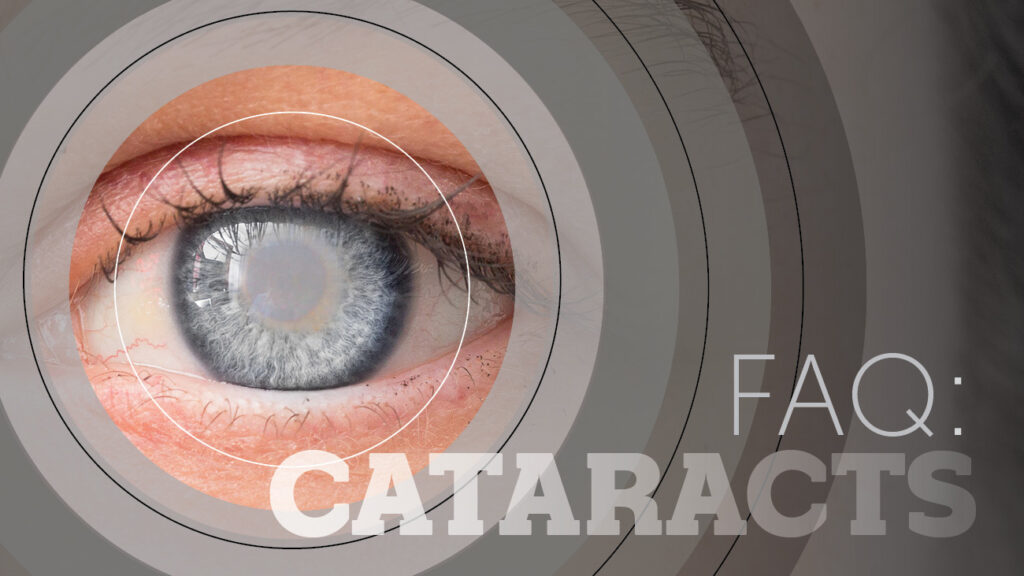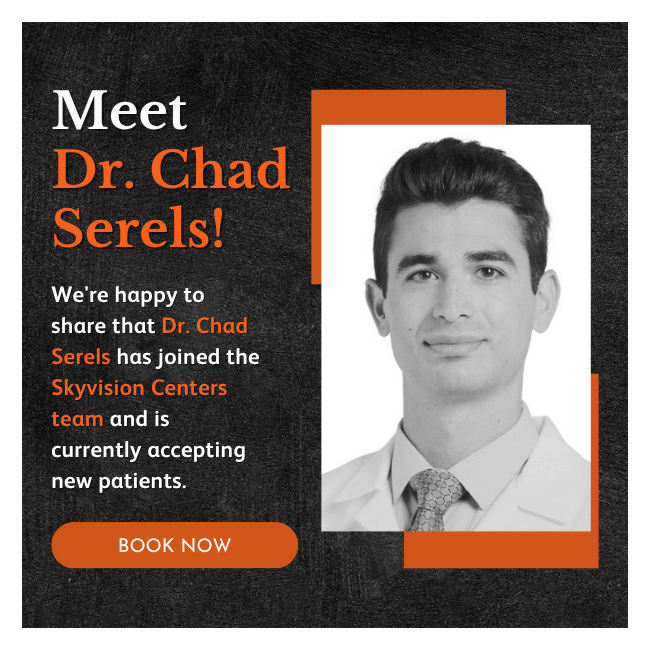Think you may be at risk for developing cataracts? Here is an overview of the most frequently asked questions about cataracts, including potential cataract treatment and congenital cataracts. Give our office a call and schedule an appointment to have your questions answered!
What are cataracts?
Cataracts are a clouding of the eye’s natural lens and are the most common cause of vision loss in the world. According to Prevent Blindness America, more than 22 million Americans have cataracts.
Who gets cataracts?
Cataracts begin to form in those over the age of 40. However, it is typically after age 60 that cataracts cause problems with vision.
Are there any signs or symptoms?
Cataracts start small and have little effect on your vision at first. However, you may notice symptoms once the cataract is well developed.
Potential symptoms include:
- Blurred vision
- Cloudy or foggy vision
- Light from the sun or a lamp feels too bright or glaring
- Oncoming headlights while driving cause more glare
- Colors appear dimmed or faded
What causes cataracts?
As we age the natural protein in our eyes can clump together and cover a small area of the lens. Over time this may grow larger and cloud more of the lens. This cloud is what we refer to as a cataract.
Can I prevent cataracts?
It is not believed that there is anything you can do to prevent cataracts. However, there are a number of things you can do to reduce your risk of developing cataracts. Nutrients such as vitamin E and vitamin C are believed to reduce your risk. Eating a healthy and well-balanced diet can help. Additionally, wearing sunglasses that block 100 percent of UV rays can reduce cataract risk.
What increases my risk for cataracts?
- UV radiation
- Diabetes
- Hypertension
- Obesity
- Smoking
- Family history
- Significant alcohol consumption
- Certain medications
Is there cataract treatment?
The treatment for cataracts will vary for each person. When symptoms begin to appear patients may use new stronger prescription glasses. Cataract surgery will become an option if the cataract progresses far enough to impair your vision. Cataract surgery is the most frequently performed surgery in the United States and is successful in restoring vision.
What are congenital cataracts?
Congenital cataracts occur in newborn babies because the eye’s natural lens is cloudy instead of clear. Often this results in vision problems for the child. However, this occurs in only 0.4% of all births and is relatively uncommon.
To discuss your risk for developing cataracts schedule an appointment today! The best way to prevent vision loss is by having regular eye exams.




